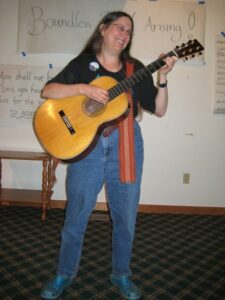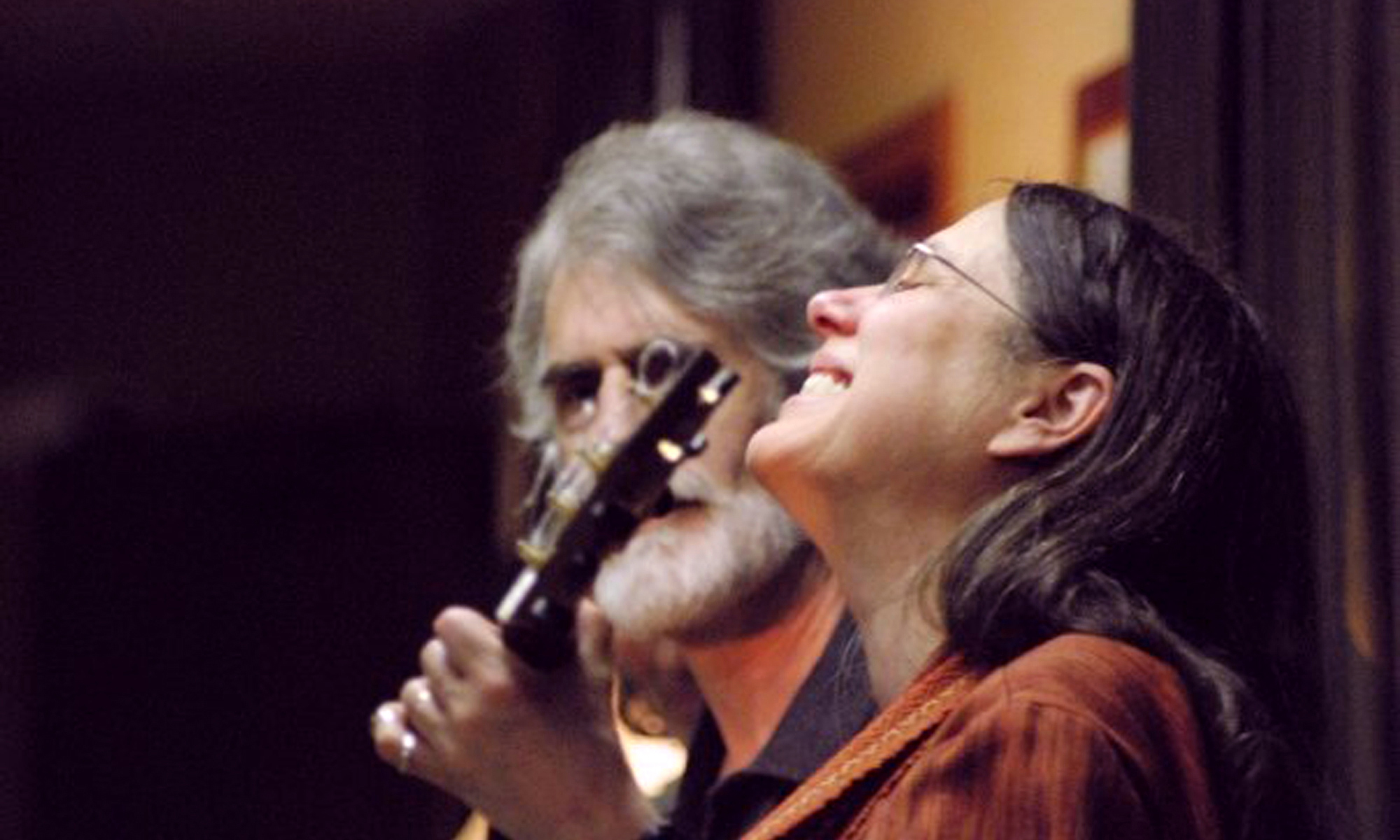
I teach beginning guitar lessons, and you can contact me, here.
Here’s how to get started:
1. Make sure you’re big enough to reach around your guitar comfortably. Otherwise scale down to a ukulele for the first year so you don’t wind up with an assumption that your body is supposed to be uncomfortable as you play. Everything you learn on uke will shift right over to guitar when you’ve grown a bit. If you start with a uke, use C, G7 & F on a uke tuned to C6. Start with the C chord. Other than that, everything else I have to say applies.
2. Let yourself experience the difference in pressure it takes to hold down the string without it buzzing, at various points behind the fret. Use the low E string at the second fret, in three locations: first halfway between the first & second frets; then at the “back of the fret” just above the first fret; then in the “sweet spot” just behind the second fret. It takes WAY less pressure in the sweet spot. Then, when you set up your first chord, pay attention to getting fingers on the sweet spots.
3. Try the E chord. Make sure your wrist is straight every moment because if guitar “takes” you’re going to make that gesture a million times in your life and you could wind up with repetitive motion injuries if your hand is cranked uncomfortably. We want all gestures to be efficient and safe.
Practice doesn’t make perfect. It just makes permanent. So only practice the things you want to keep.
4. Teach yourself the Tapping Game. Find the chord, strum it once, tap your knee once with the same hand that was holding the chord, then find the chord again. Do this several times as a trial run. Now it’s time for the game: Count to eight, very slowly. On “one” strum the chord. On “two” slap your knee. Keep counting, and by “eight” find the chord again and strum it on the next “one” beat. Repeat the whole sequence but slap on both “two” and “three.” Each time, add one more. When you crash, leave it and do something else for a few minutes, then come back to the game till you can get clear to at least “six” and find the E chord again in just 2 beats. Long term, you’re aiming for getting clear to “eight.”
(I learned this game from James Hill, who has an amazing book called Ukulele In The Classroom that teaches music literacy along with ukulele. It’s a big part of why I’ve started teaching kids Uke instead of guitar to begin with. 4 strings, easy to push down, cheap. Plus literacy.)
5. Sing and play a bunch of one chord songs like Row Row Row Your Boat & Frere Jacques. You’ll find a list on my website. This is more than enough for lesson one, and maybe for lesson two and/or three as well.
6. When you’re really got the E chord solid, no hesitation at all, like tying your shoes, then teach yourself the A chord. Set up the A as follows: first finger 3rd string; second finger 4th string and third finger 2nd string. This is very important because then you can use your index finger as a pivot, keeping it in touch with the 3rd (G) string as you shift from A to E. First use the Tapping Game, then practice shifting chords, not during a song, but all by itself till it gets easy.
7. After shifting chords between E & A is easy, then teach yourself Down In The Valley & The Hokey Pokey (separate lessons) with Boom Chuck Chuck for one, and Boom Chuck for the other, with the right hand thumb hitting the Boom on the ROOT of each chord. Expect the two rhythms to get tangled up to begin with. They’ll settle down after a while. Highlight the downbeat at the beginning of the Hokey Pokey. The Boom has to be on the downbeat.
7. Just teach yourself two chords for starters: A & E. The I & V chords, tonic & dominant) Look at the list of 100 songs on my website and work through the easiest of the ones in the first column. The goal is for you to figure out how to hear and predict when the chords will change.
8. Don’t add a third chord (D) till you can easily figure out most 2 chord songs. This could take weeks, or possibly a couple months. Don’t hurry. You’re laying a foundation that will let you teach youself instead of being dependent on others to tell you how the chords work. Once you gets your D chord (still keeping that index pivot finger in place) up and running (Tapping Game) then first you figure out the same 2 chord songs in the key of D (D & A). Begin & end on D instead of A.
9. Then you can go on to This Land Is Your Land and On Top Of Spaghetti (different lessons again). Add more songs. But not till those three chords are completely fluid and you knows what to do with them, including hitting the roots first on every chord and predicting whether the song should be boom-chuck or boom-chuck-chuck.
9. If you learn to play 100 3-chord songs in at least two or three keys (wait on the F chord till everything else is fluid), by ear, you will have a solid foundation to learn anything else you ever want to learn on guitar. And to join in on jam sessions.
There, that’s 40 years worth of what I’ve learned about teaching beginning guitar. There’s lots more to it, but it’s a fair beginning. Keep your sessions short and fun.
